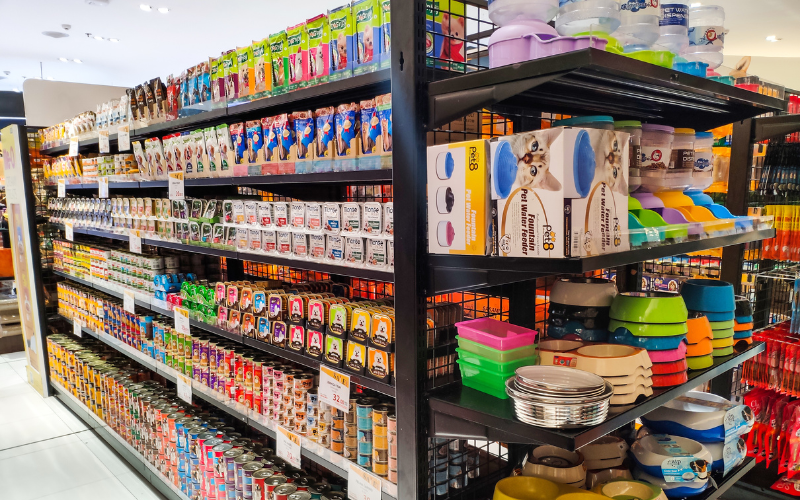What is Retail-Ready Packaging?
When shipments arrive in a retail setting, employees race to unpackage and prepare them for immediate display. That’s why retailers are turning to retail-ready packaging (RRP) to reduce costs and save time.
Retail-ready packaging uses a streamlined, multi-purpose design to get products from shipping to the shelf in one smooth movement. In this blog, we’ll break down the basics of retail-ready packaging and provide helpful tips to optimize your packaging for the showroom floor.
What is Retail-Ready Packaging?
Many retailers encourage suppliers to implement retail-ready packaging to save valuable time during the merchandising process. Retail-ready packaging refers to product packaging that is designed to transition seamlessly onto store shelves.
When your retail-ready packaging arrives at stores, associates should be able to effortlessly place your product on a display shelf without any additional assembly. Retail-ready packaging is most often used with products that are sold in bulk like food, beauty products, and household goods. You might want to consider retail-ready packaging if you’re pitching to a big box store like Costco or BJ’s.
Of course, retail-ready packaging needs to meet strict standards for each retailer, including stacking requirements, product information, and branding. For more information, reach out to your buyer and ask for their packaging requirements.
As the name implies, RRP should eliminate the need for extra preparation and allow retailers to easily stock their shelves. Packaging should easily open and close, and some retailers (including Walmart) will even measure the number of seconds it takes a customer to access your merchandise.
When Should I Use Retail-Ready Packaging?
You should seriously consider using retail-ready packaging if any of the following circumstances apply.
- Your product is sold in large quantities: Bulk products are a perfect fit for RRP because customers can easily grab as much merchandise as they need.
- You sell to big-box stores: Retailers like Sam’s Club and Home Depot usually require a specific retail-ready packaging pitch to prove that your brand is a good fit.
- You want to improve the product's visibility on store shelves: Retail-ready packaging removes barriers between consumers and your product. If you have a visually engaging product, RRP allows customers to engage directly with your merchandise before making a purchase.
- You want to reduce packaging waste: Because products don’t need to be individually packaged, retail-ready packaging cuts down on needless waste and most retail-ready packaging displays are easily recyclable at the end of their life cycle.
- You want to provide product information and branding: Communicate important messages about your product and create a cohesive brand image using RRP.
- You want to create a positive unboxing experience: Retail-ready packaging creates a frustration-free unboxing experience, which lends itself to influencers promoting your products.
Retail-Ready Packaging Design Best Practices
It’s important to research chain-specific rules, but in general, these best practices will help your retail-ready packaging succeed in virtually any setting.
- Durability: Regardless of its design, test your packaging to guarantee it will withstand the shipping and handling process without any damage.
- Branding: Utilize eye-catching designs to help your products stand out in a competitive marketplace.
- Product visibility: Highlight key features of your merchandise and make sure browsers can easily see your product from a distance.
- Shelf appeal: With thousands of products vying for shoppers’ attention, it's crucial to use engaging graphics to attract prospective buyers.
- Ease of use: Keep in mind the employees who will be stocking your display. Make it easy for them to restock and transport your products.
- Eco-friendliness: Most big-box retailers now require a minimum amount of sustainable packaging, like post-consumer cardboard or biodegradable plastic.
- Consistency: Not only should your products be totally uniform, but your packaging should create a cohesive link with your overall brand strategy, including colors and logos.
- User-friendly information: Vital information like nutrition facts and ingredients should be easily legible across your packaging.
- Compliance: Perhaps most important, make sure you're compliant with any stated rules and regulations. Failure to do so can lead to your product's removal from a retail setting.
Related Content: How to Design Unique Retail Packaging
5 Common Retail-Ready Packaging Styles
Use these popular styles to help your retail-ready packaging succeed in virtually any retail setting.
- Blister packs and clamshells: If you sell electronics, beauty products, or another visually interesting item, you should consider using blister packs or clamshells to exhibit your merchandise. Both retail-ready packages incorporate hard, translucent plastic to protect products while maximizing visibility.
- Hang-sell packs: This variety of retail-ready packaging is perfect for snacks and drinks. Hang-sell packs use a pre-formed hole to hang on displays throughout a store.
- Display boxes: Combining the sturdiness of corrugated cardboard and the visual appeal of clear windows, display boxes are a great fit for household goods, confections, and toys.
- Shrink wrap: Many brands use shrink wrap as a form of retail-ready packaging because it is heated and shrunk to match products' exact dimensions, saving valuable shelf space.
- Flow wraps: If your brand sells fresh produce or snacks, consider using flow wraps, which are continuous rolls of plastic film.
Before committing to any retail-ready packaging, you should carefully consider your product, key demographics, and competitors to make an informed decision. Many brands order sample packaging before settling on a final design.
Takeaway
To keep up with the constantly changing world of retail, leading companies are turning to retail-ready packaging. Thoughtfully designed packaging can increase product visibility, make merchandising easy for store associates, and improve accessibility for customers.
Consider incorporating retail-ready packaging like clamshells, display boxes, and shrink wrap to take your packaging to the next level, appeal to big-box retailers, and increase sales.



